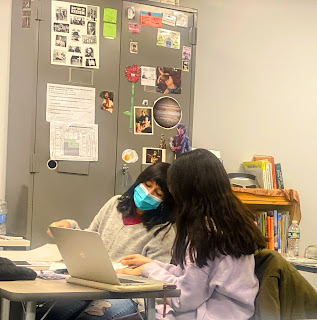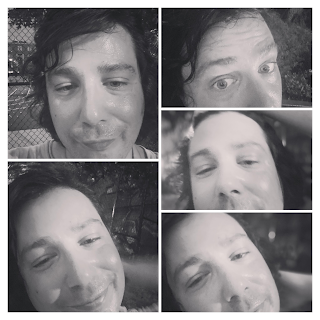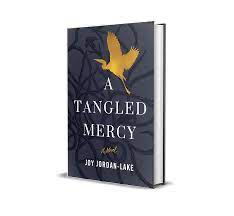Silhouette still image — in the public domain scanned by the New York Public Library (Digital Collections). 1922.
Stones of Erasmus — Just plain good writing, teaching, thinking, doing, making, being, dreaming, seeing, feeling, building, creating, reading
5.9.22
Clip Art: Psyche and Cupid (Amor)
 I am an educator and a writer. I was born in Louisiana and I now live in the Big Apple. My heart beats to the rhythm of "Ain't No Place to Pee on Mardi Gras Day". My style is of the hot sauce variety. I love philosophy sprinkles and a hot cup of café au lait.
I am an educator and a writer. I was born in Louisiana and I now live in the Big Apple. My heart beats to the rhythm of "Ain't No Place to Pee on Mardi Gras Day". My style is of the hot sauce variety. I love philosophy sprinkles and a hot cup of café au lait.
19.8.22
Photos Taken Near the Bronx River and Two Stories About New York City from Louisianians
 |
| A New York City subway train traverses the Bronx River. |
And then, I asked him to imagine what the city smelled like and felt like (using sensory details): “New York is fun and stinky and interesting, like a hot dog.”
When I asked my seventy-something-year-old aunt what people in Louisiana think about New York, she told me a story: “Greig, I would say they think it's too dangerous, but when I went to New York with Uncle Raymond in 1993, that's the only place that I was able to go out at night shopping. Even in New Orleans, even when we lived in Chalmette, I couldn't go out at night shopping. Oh my God. I forgot how many years ago. That was probably twenty-odd years ago. But in New York, I could go shopping. We had a hotel near Times Square, So I was able to go up and down that street without any restrictions in the middle of the night. Do you know? And, um, you know, I never go at night, and Uncle Raymond never let me go anyplace at night.”
 I am an educator and a writer. I was born in Louisiana and I now live in the Big Apple. My heart beats to the rhythm of "Ain't No Place to Pee on Mardi Gras Day". My style is of the hot sauce variety. I love philosophy sprinkles and a hot cup of café au lait.
I am an educator and a writer. I was born in Louisiana and I now live in the Big Apple. My heart beats to the rhythm of "Ain't No Place to Pee on Mardi Gras Day". My style is of the hot sauce variety. I love philosophy sprinkles and a hot cup of café au lait.
18.8.22
Book Review: A Tangled Mercy by Joy Jordan-Lake
 I am an educator and a writer. I was born in Louisiana and I now live in the Big Apple. My heart beats to the rhythm of "Ain't No Place to Pee on Mardi Gras Day". My style is of the hot sauce variety. I love philosophy sprinkles and a hot cup of café au lait.
I am an educator and a writer. I was born in Louisiana and I now live in the Big Apple. My heart beats to the rhythm of "Ain't No Place to Pee on Mardi Gras Day". My style is of the hot sauce variety. I love philosophy sprinkles and a hot cup of café au lait.
30.7.22
Musings and Photos: On First Meetings and How I Sort-Of Allude to Peekaboo in a Serious, Philosophy-Minded Kind of Way
In this post, I free associate about first meetings, love, and God knows what else!

Sometimes you have to lie back down on the concrete to see what's up there.
There’s something potentially powerful in a first meeting, So, which is why, if you watch like, um, Pre-K students or Kindergarten students, there's a struggle, a challenge in adapting to others because it's strange. It's not mother’s face; it's not home. It's not the womb. It's not the place where you grew up. It's not, it's not that, you know, and that's why like child psychologists or developmental psychologists will talk about like, um, the experiences of the young child, right before they go to school, where they, where they, um, experienced this back and forth between I'm scared; I'm safe; I'm welcomed. I'm, uh, I'm terrified; I'm. . . I'm taken in; I'm comforted, right? So this, like, gets encapsulated in the childhood game of like peekaboo. I'm here. I'm not there. So presence and absence. Um, and for me, you know, I can tap into some deep psychic stuff, you know, like something, this, I can feel, like a child, when that love object is absent. I mean, it's such a strong visceral feeling, which is why I think first love for a teenager or a young adult can be so powerful and rip you apart. I mean, I can remember just longing for somebody who I was in love with, you know, wanting to be with them. And when I wasn't with them, it just was this physical feeling of absence. Um, so that's real. I mean, that's like kick to the gut emotion. Um, and perhaps you get out into the world — for me, moving from small town Louisiana to Europa to a Benedictine monastery (yes, that happened), to New York and the world again, I'm not sure what happens, but you get used to the pain — of that — of this — world. Offers or you take, or you look for; or, you pine. Are you able, you're able to sort of like sublimate, whatever you lost, what will you able to like, not replace, but you're able to sort of like transmute, whatever you lost into something new. Right? That's what art is. That's what creativity is and all that kind of stuff. Um, but going back to this original idea of like, when the, the potential power in a first meeting, right, the potential power there is, and just meeting someone for the first time, you know, um, uh, it can be such a satisfactory experience, right?
 |
| Photos (Read From Left and Clockwise): Women in Red Dresses in Flushing; Getting off the LIRR in Port Washington; Two Dead Fish; A Fishmonger and His Assistant |
 I am an educator and a writer. I was born in Louisiana and I now live in the Big Apple. My heart beats to the rhythm of "Ain't No Place to Pee on Mardi Gras Day". My style is of the hot sauce variety. I love philosophy sprinkles and a hot cup of café au lait.
I am an educator and a writer. I was born in Louisiana and I now live in the Big Apple. My heart beats to the rhythm of "Ain't No Place to Pee on Mardi Gras Day". My style is of the hot sauce variety. I love philosophy sprinkles and a hot cup of café au lait.
28.7.22
Teaching Peter and the Wolf: 2006 Oscar Winning Suzie Templeton Short Film
 |
| A typical day of learning in Mr. Roselli's English Language Arts classroom. |
 I am an educator and a writer. I was born in Louisiana and I now live in the Big Apple. My heart beats to the rhythm of "Ain't No Place to Pee on Mardi Gras Day". My style is of the hot sauce variety. I love philosophy sprinkles and a hot cup of café au lait.
I am an educator and a writer. I was born in Louisiana and I now live in the Big Apple. My heart beats to the rhythm of "Ain't No Place to Pee on Mardi Gras Day". My style is of the hot sauce variety. I love philosophy sprinkles and a hot cup of café au lait.
25.7.22
Journal Entry #2502022: I Woke Up This Morning on a Hot, Summer Day in Queens and I Fiddled
 |
| On Astoria Boulevard in Queens, there is a mural of a 7 subway train car; The author notes, "As I waited for my take-out, I snapped a picture of the fish in the aquarium. Life is good." |
 I am an educator and a writer. I was born in Louisiana and I now live in the Big Apple. My heart beats to the rhythm of "Ain't No Place to Pee on Mardi Gras Day". My style is of the hot sauce variety. I love philosophy sprinkles and a hot cup of café au lait.
I am an educator and a writer. I was born in Louisiana and I now live in the Big Apple. My heart beats to the rhythm of "Ain't No Place to Pee on Mardi Gras Day". My style is of the hot sauce variety. I love philosophy sprinkles and a hot cup of café au lait.
22.7.22
Heat Stroke Diary #34876: The Summer of 2022 and My Oscillating Fan is on High Alert
 |
| Collage of the Author Created During the Heatwave of 2022. |
 I am an educator and a writer. I was born in Louisiana and I now live in the Big Apple. My heart beats to the rhythm of "Ain't No Place to Pee on Mardi Gras Day". My style is of the hot sauce variety. I love philosophy sprinkles and a hot cup of café au lait.
I am an educator and a writer. I was born in Louisiana and I now live in the Big Apple. My heart beats to the rhythm of "Ain't No Place to Pee on Mardi Gras Day". My style is of the hot sauce variety. I love philosophy sprinkles and a hot cup of café au lait.








